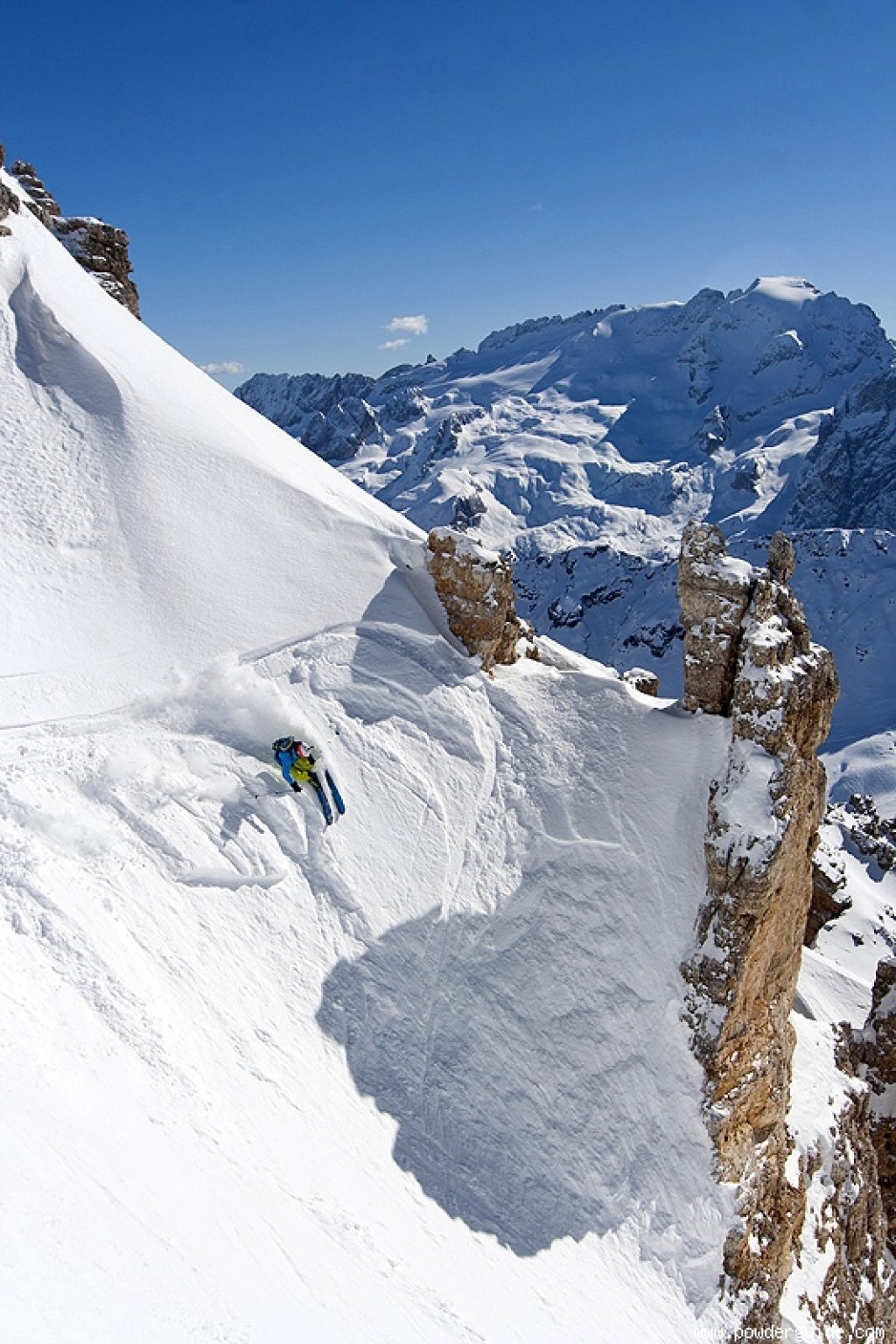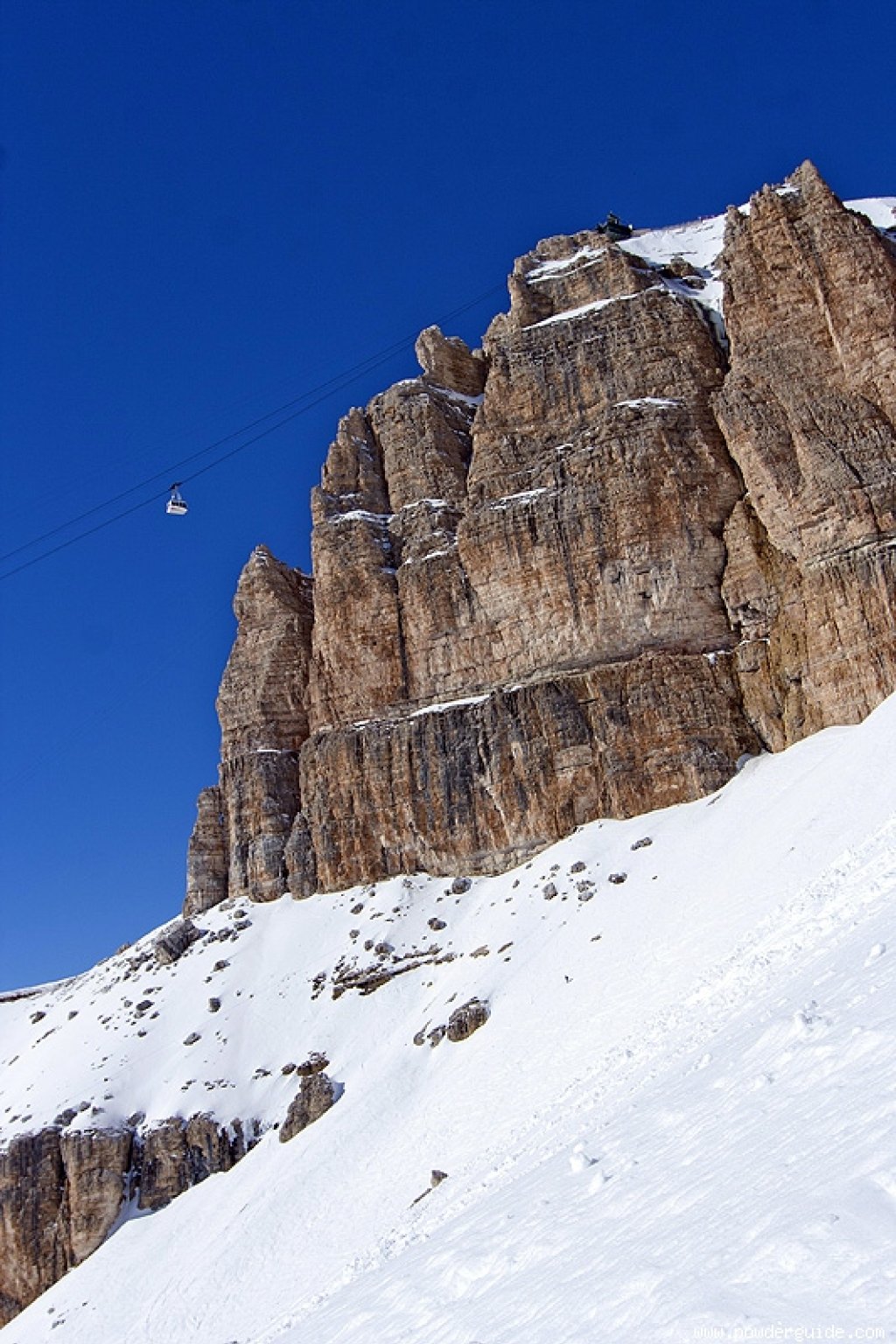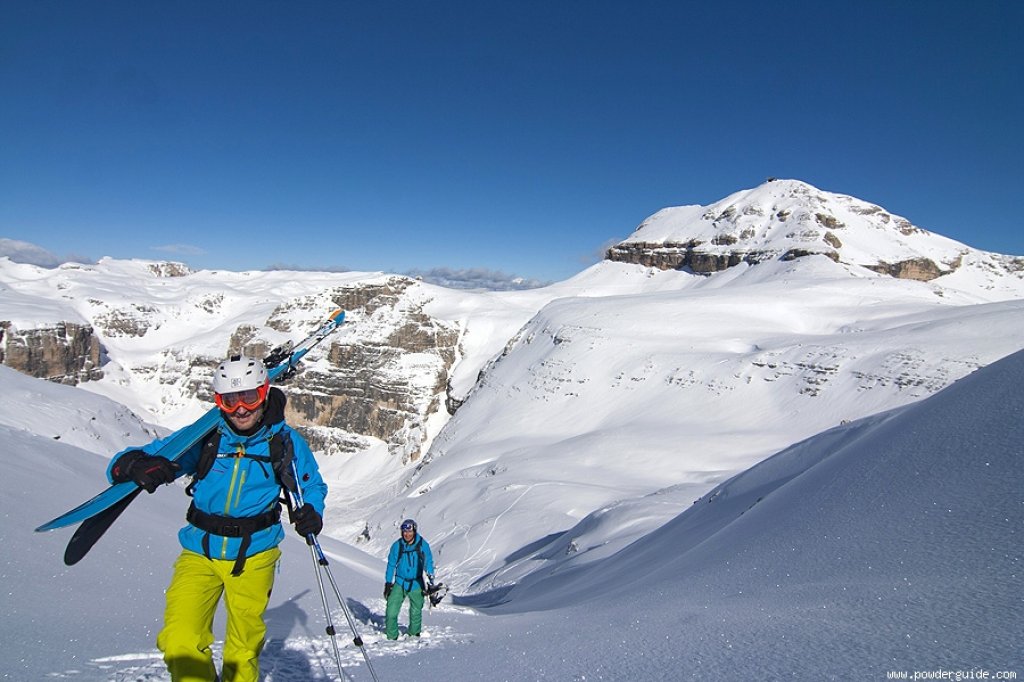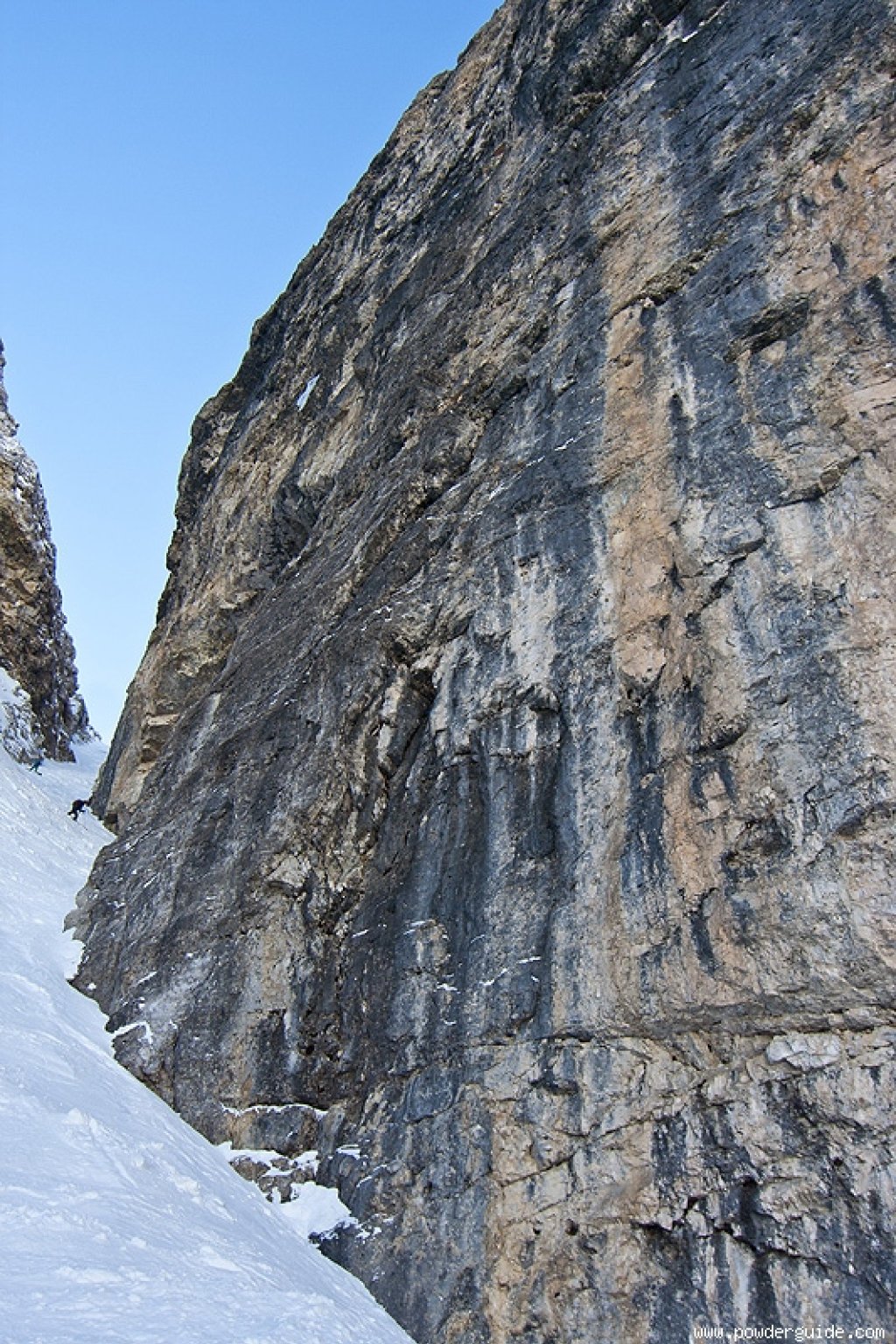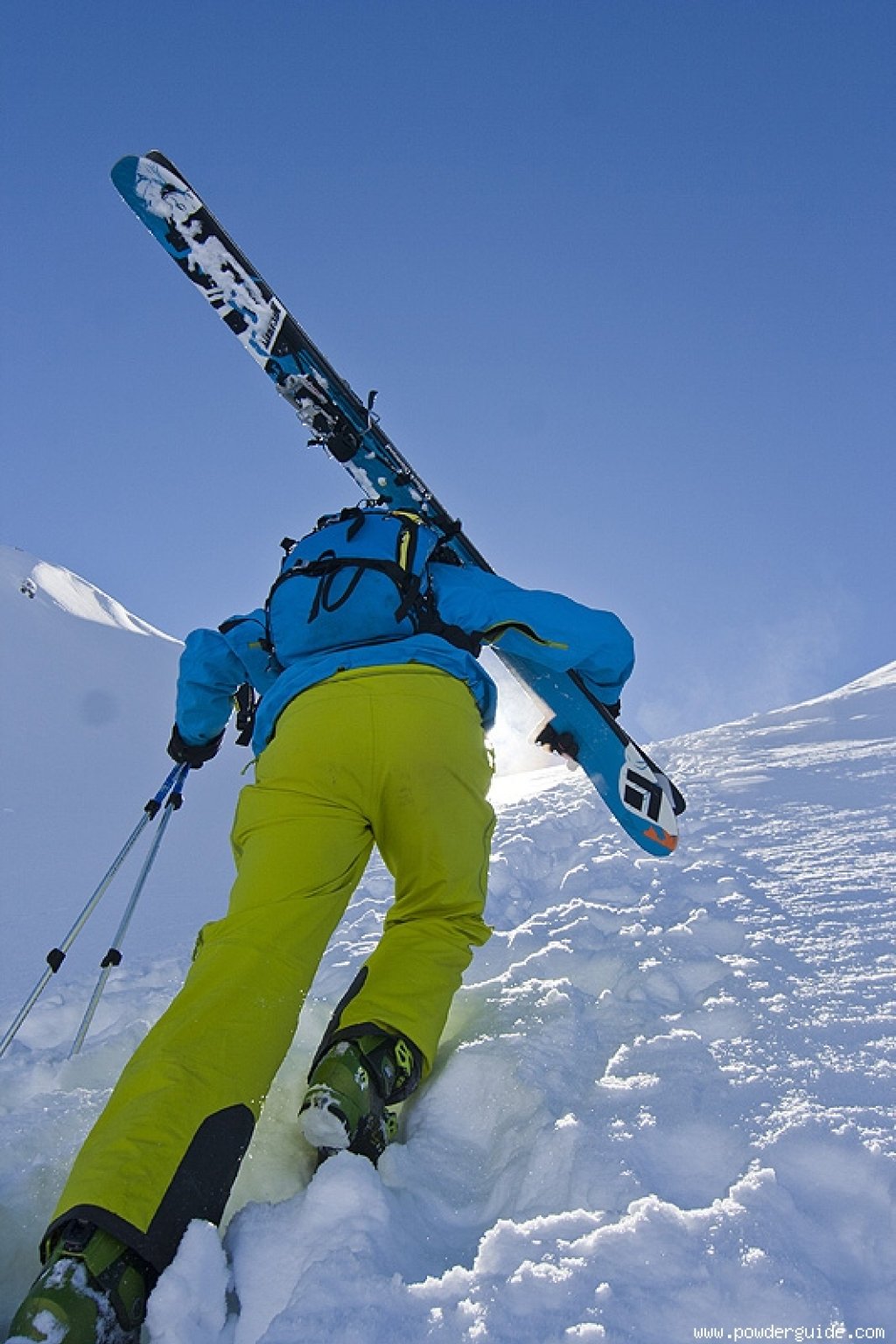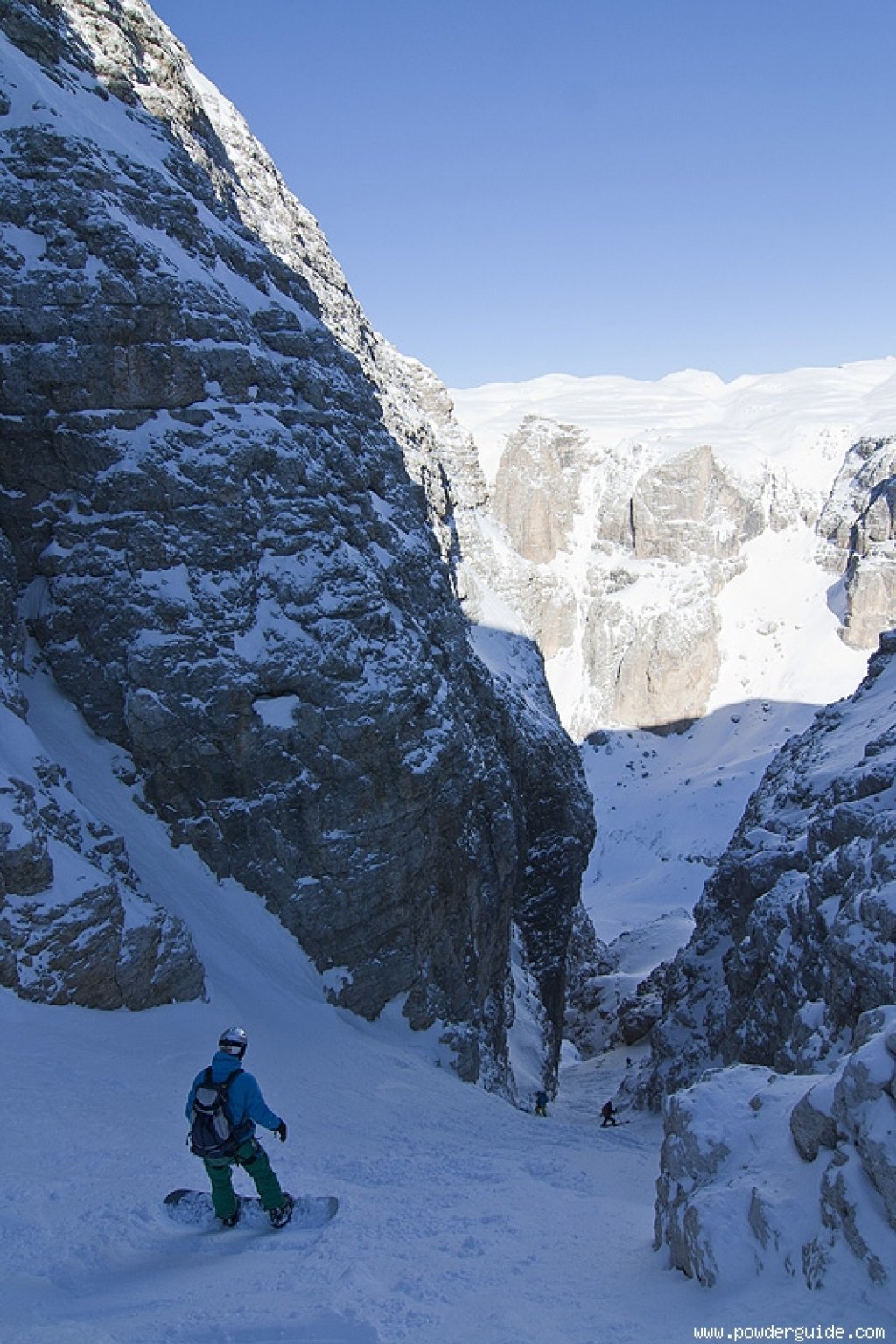Val Mezdi, Forcella Pordoi, Val Lasties or Val Setus: without question, all very impressive and scenically unique descents that lead from Sass Pordoi into the various valleys around the Sella massif. But this time we're taking a steeper approach: We will ski the famous Canale Holzer, named after the steep face skier Heini Holzer, and the Canale Joel. The entrances to both descents are right next to the Sass Pordoi mountain station. And both are considered the gateway to the tantalising world of steep face skiing. The entrances to these gullies, which are flanked by rockfalls that are sometimes several hundred metres deep, are less than 300 metres apart in beeline. Nevertheless, the two descents are very different. On one side is the long and always shady Canale Holzer with some striking steep steps and a waterfall, over which you usually have to abseil. On the other side is the south-facing, exposed "Plaisircouloir" with the famous "Poser-Turn" in front of the Marmolada group and a gentle descent directly back to the Sella gondola.
Canale Holzer
Difficulty: 5 out of 5
Special dangers: Abseiling point up to 8 m, snowboarders: don't forget poles, ice axe recommended.
Average steepness/Maximum steepness: 45°/50 °
Exposure: N/NW (gully), W (Val Lasties, Pian Schiavaneis)
Metres in altitude uphill and downhill: 0 HM | 1100 HM downhill
Duration: 2 hours
Best time of year: February - April (Spectacularly). The Canale Holzer stretches over 500 vertical metres through the north face of the Sass Pordoi. Access is extremely easy thanks to the cable car. Due to the steepness, good skiing technique is required, and the abseiling point halfway along the route calls for alpinistic skills. From the mountain station, follow the summer trail markings for a few metres on the summit plateau to the north-east until it becomes steeper. Then keep left and follow a narrowing, large incision in the terrain, which finally leads into the couloir. The first part of the gully is very steep and the entrance is often further narrowed by a few stones that are not covered in snow. After a while, the couloir widens a little and you reach the abseil point. The path is blocked by a steeply sloping boulder. The abseil anchor is on the right-hand side of the rock, which is in the centre of the couloir. You abseil down the cliff via a small icefall. A 30 metre long rope is usually sufficient, only in very good snow conditions can the icefall be overcome by dropping it. The couloir finally leads into the Val Lasties. You reach the Pian Schiavaneis and follow the road downhill to the left (later changing sides of the road) and finally back to the Lupo Bianco lift. If you buy a single way, you will have to climb the piste to the Pordoi Pass on skins, call a taxi or hope for a car stop.
Canale Holzer - February 2011 from www.PowderGuide.com on Vimeo.
Current information: On 19 February 2011, the abseil point could be jumped with a 1.5 m high drop with a narrow landing. If you are not sure about the current situation, make sure you have abseiling equipment with you.
Joel Channel
Difficulty: 4 out of 5
Special dangers: Note the time of day when it warms up
Average gradient / maximum gradient: 40°/45 °
Exposure: S/SW
Metres of ascent and descent: approx. 50 metres uphill | 750 metres downhill
Duration: 1 hour
Best time of year: January - MarchFrom the mountain station at Sass Pordoi, cross in a north-easterly direction along the posts that mark the summer trail. Pass a cornice and traverse briefly to the north-east before descending a few metres south to the hut at Forcella Pordoi (2829 m). From the saddle, push along the slope for a few metres on the mostly trodden track towards Mittagstal. After about 30 metres, shoulder your sports equipment and climb up a medium-steep slope for about 30 metres to the saddle. Here on the plateau, strap on your skis and ski into the distinctive gully. Steep up to 45° at the top and in the narrower section below. At the end of the gully, ski slightly to the right and aim for the valley station at the Pordoi Pass. A variation runs from the exit of the gully along the southern slope towards Arabba, whereby you always stay north of the piste and meet it again at your leisure.
Information
Accommodation: Various in Canazei and Arabba
Bar/Restaurant: At the Pordoi Pass and in the mountain station.
Addresses: Dolomiti Superski www.dolomitisuperski.com, Alta Badia www.altabadia.org
How to get there: Brenner motorway via Bruneck and Corvara and Arabba, or Brenner motorway via Val Gardena to the Pordoi Pass.
Topographical maps: Tabacco: Sella Ronda e Valli Ladine, double map 1:25,000 1:50,000 with marked ski pistes and ski routes.
Book tip: "Freeride in Dolomiti" by Franzesco Tremolada. The guide describes the off-piste and steep descents in the Dolomites with many ski and landscape pictures in Italian and English, Edizioni Versante Sud, Milan 2009.
Other recommendations: Mountain guide Franzesco Tremolada, (author of the freeride book) runs a well-maintained internet blog about the current conditions at www.proguide.it.

